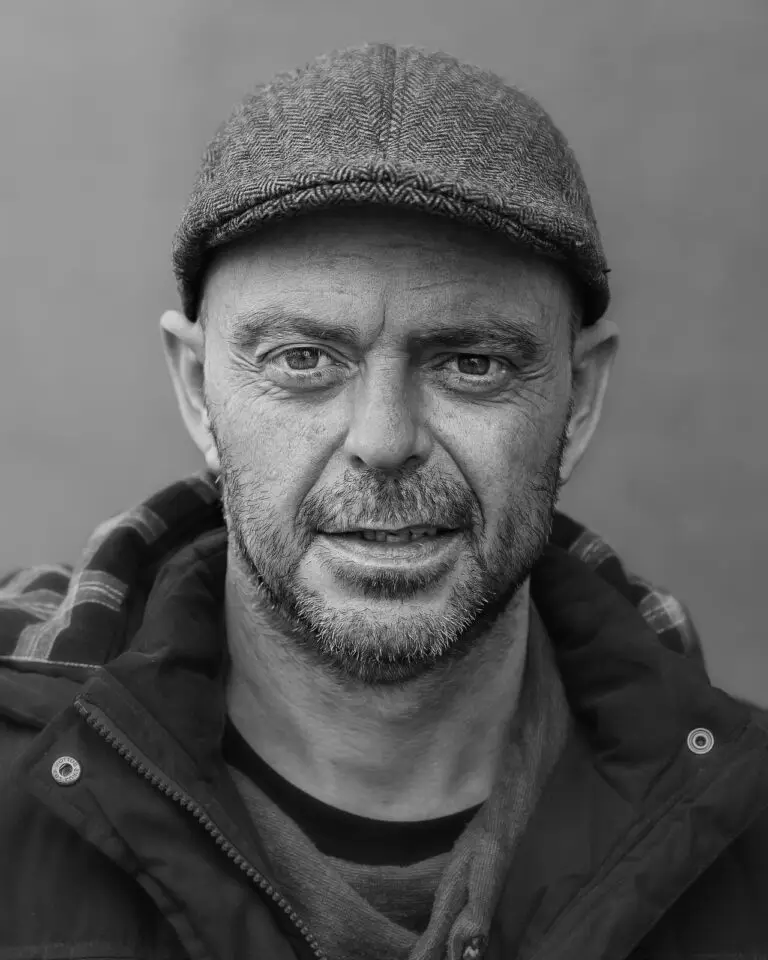Awarded Craftsman Status by The Guild of Photographers
I am incredibly honoured and humbled to have been awarded Craftsman status by The Guild of Photographers for the BREAKING THE STEREOTYPE project. This prestigious
Revealling the myth behind a stereotypical homeless person
Can you spot someone who has experienced homelessness just by looking at them? Take a closer look at these images and see if you can tell.
Challenge your assumptions—test yourself and find out.
When we think of homelessness, the image that often comes to mind is of scruffy-looking individuals begging or sleeping in shop doorways, struggling with mental health issues, drug, or alcohol addiction. This image is ingrained for good reason—it represents the visible side of the homelessness crisis in the UK. However, it’s only a small part of the picture.
The homeless community is among the most vulnerable in the country, with an estimated 271,000 individuals in England alone—enough to fill Wembley Stadium to capacity three times over. Yet, the visible face of homelessness, which fuels our stereotypes, accounts for only about 1% of this population. According to data, there are approximately 3,069 rough sleepers in England, a number comparable to the number of toilets in Wembley Stadium.
This narrow stereotype distorts the truth, leading many to believe that homelessness primarily affects those who have committed crimes or suffer from addictions. In reality, many who find themselves on the streets once had jobs and homes but lost them due to unemployment, illness, or financial difficulties. Some homeless individuals even hold down jobs but cannot secure permanent housing.
If our stereotype is shaped by the 1% we see on the streets, what about the other 99% we don’t see? The majority of homeless individuals live in temporary accommodations or hostels. While these provide a roof over their heads, they are not permanent solutions and do not offer a place they can truly call home. The transient nature of this existence, coupled with the constant uncertainty of when they might be forced to move on, takes a severe toll on their mental health, often in ways that are not visible to the public. This hidden crisis will continue to worsen unless we challenge and broaden our understanding of homelessness.
The BREAKING THE STEREOTYPE project aims to challenge our perceptions of the stereotypical homeless person. It invites viewers to identify, from a series of twenty images, which individuals have experienced homelessness and who has not. This project resonates with me on a personal level, as I once experienced homelessness and spent two years sleeping rough before becoming a photographer.
In collaboration with the homeless charity that supported me, I approached individuals facing or experiencing homelessness who visited the charity’s office for support. After their appointments, I had only a brief window of 3 to 5 minutes to engage with them—explaining the project, sharing a bit of my own background, and capturing their photograph. Given the limited time, I made use of the available backgrounds on the street and natural light.
Language barriers also posed a challenge, as some of the individuals I encountered had limited English proficiency. On one occasion, an interpreter was present to assist during the individual’s meeting with the charity staff, which was crucial in facilitating our interaction.
To complete the project, I also needed to photograph individuals who had not experienced homelessness. After the sessions at the charity, I approached random people on the High Street, adhering to the same constraints—keeping each interaction to a maximum of 5 minutes. This ensured that all photographs were captured under similar conditions, maintaining the integrity of the project.
This project is not just about photography; it’s about breaking down the stereotypes that cloud our understanding of homelessness and revealing the often unseen reality of those who experience it.
Collaboration is central to the BREAKING THE STEREOTYPE project. Wycombe Homeless Connection and John Lewis in High Wycombe joined forces to amplify the project’s impact and reach. This partnership was crucial in giving a voice to those facing homelessness and promoting community understanding. By working together, the project not only highlighted individual stories but also strengthened community awareness and provided direct support to those in need. Together, they made a significant difference, fostering a more compassionate and informed community in High Wycombe.
As you explore this exhibition, ask yourself: can you distinguish who has experienced homelessness and who hasn’t? Among the 20 images below, 13 individuals have been homeless, and 7 have not. Can you tell the difference? To date, I haven’t heard of anyone getting it right on their first try. Give it a go. See if you can.
I am incredibly honoured and humbled to have been awarded Craftsman status by The Guild of Photographers for the BREAKING THE STEREOTYPE project. This prestigious
In March of last year, the BREAKING THE STEREOTYPE project reached a significant milestone when it was displayed at John Lewis in High Wycombe. This

The BREAKING THE STEREOTYPE project was more than just a creative endeavour; it was a deeply personal journey that unfolded over five intense weeks. Returning
The Christopher James Hall Foundation is the trading name of The Narrators Lens CIO. Our foundation is dedicated to fostering an inclusive and empathetic society by empowering individuals through the transformative power of photography.
Registered Company No.: 13948827
Registered Charity No.: (coming soon)
Get updates on what we are doing and how you can help make a difference.